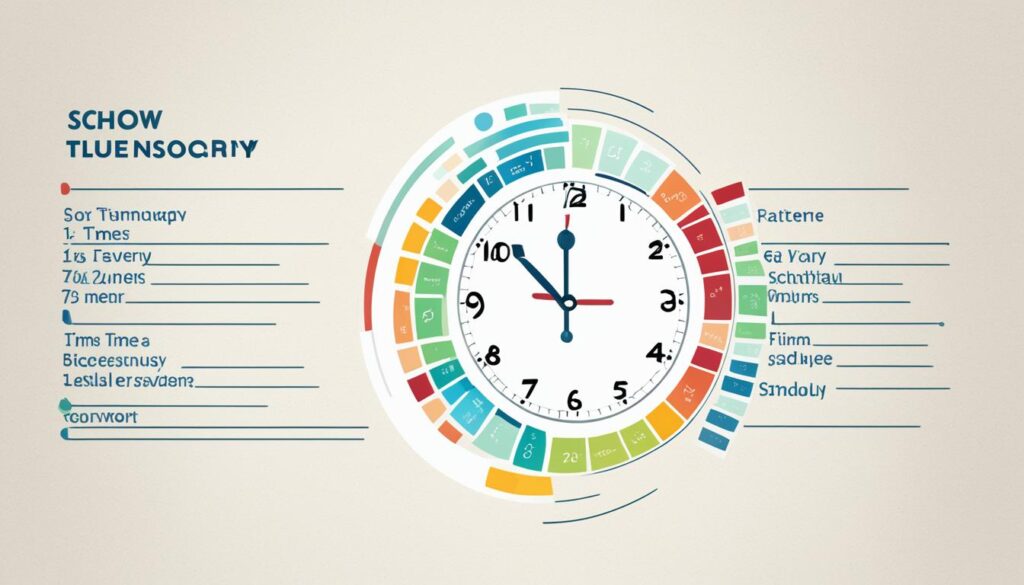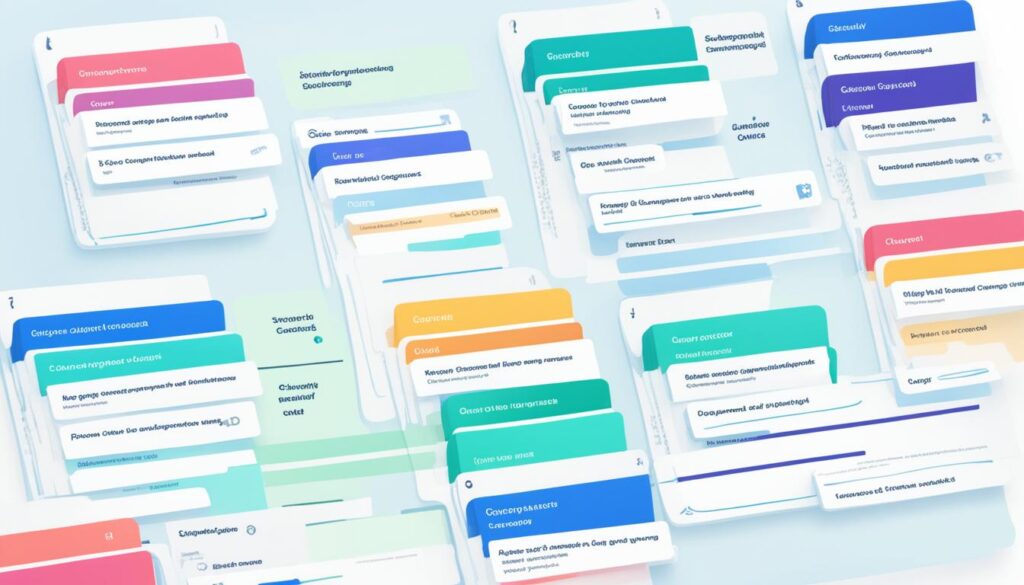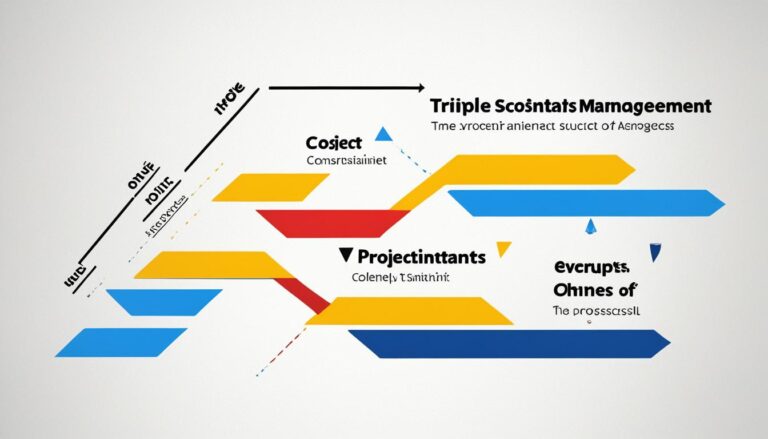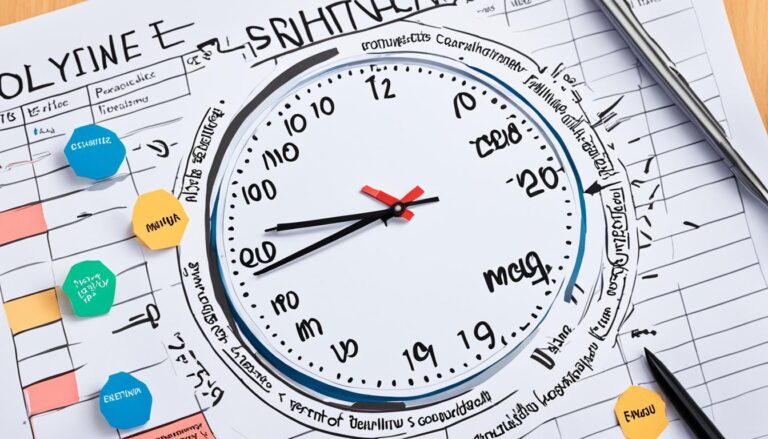Master Time Management Strategies for Success

“Time is what we want most, but what we use worst.” – William Penn
Time management is the key to achieving success, both in your professional and personal life. Every day, we are granted the same 24 hours, but how we choose to utilize that time can make all the difference. Effective time management is about maximizing productivity, minimizing wasted time, and staying focused on the tasks that matter most.
Whether you’re a business owner juggling various responsibilities or an individual seeking to improve your work quality and overall well-being, mastering time management strategies is crucial. By implementing these strategies, you can overcome procrastination, reduce stress, and have more time to work on strategic projects that will drive you forward.
Understand How You’re Spending Your Time
It’s crucial to gain insight into how you currently allocate your time in order to identify areas for improvement and maximize productivity. By tracking your time and measuring your productivity, you can uncover patterns and habits that may be hindering your efficiency. Time-tracking tools like RescueTime can help you gain a clear understanding of how much time you spend on work-related tasks versus non-work activities.
With these tools, you can accurately measure the time you spend on various activities, whether it’s focused work, email correspondence, social media browsing, or other non-work-related tasks. By analyzing these metrics, you can identify time sinks and unproductive habits, enabling you to make necessary adjustments and optimize your time usage.
For example, you may discover that you consistently spend more time than necessary on non-work activities, such as excessive social media use or prolonged breaks. Armed with this awareness, you can implement strategies to minimize distractions and improve focus, thereby increasing your overall productivity.
Benefits of Time Tracking and Productivity Measurement
- Insight into time spent on non-work activities
- Identification of unproductive habits and time sinks
- Awareness of time allocation for diverse tasks
- Opportunity to make necessary adjustments for improved productivity
Example of a Time Tracking and Productivity Measurement Tool: RescueTime
RescueTime is a popular time tracking and productivity measurement tool that provides detailed reports and analytics about how you spend your time. It runs in the background on your devices, silently tracking the applications and websites you use throughout the day. The tool categorizes your activities into different productivity levels, such as “productive,” “neutral,” or “distracting.”
Here’s an example of a RescueTime report that showcases time spent on various categories:
| Category | Time Spent |
|---|---|
| Work-related tasks | 4 hours |
| Email and communication | 1 hour |
| Non-work online activities | 2 hours |
| Meetings and collaboration | 3 hours |
This report provides valuable insights into how you allocate your time, allowing you to identify areas where time can be better managed and productivity enhanced.
Create a Daily Schedule
To maximize your time and increase productivity, it’s important to create a daily schedule that aligns with your goals and priorities. By following a structured plan, you can stay focused, avoid distractions, and make the most of each day. Here are some key steps to help you create an effective daily schedule:
- Allocate time blocks for different tasks: Divide your day into dedicated time blocks for specific activities, such as email management, meetings, project work, and personal tasks. This helps you allocate sufficient time for each task and ensures that important activities are not overlooked.
- Be realistic when setting timelines: It’s crucial to set realistic timelines for each task. People often overestimate their capacity to complete tasks, leading to stress and poor time management. Consider factors such as task complexity, potential interruptions, and unforeseen circumstances when determining how much time to allocate.
- Implement time buffers: To maintain the overall integrity of your schedule and prevent tasks from running over their allotted time, incorporate time buffers between tasks. These buffers act as a buffer zone, allowing you to wrap up one task, take a short break, and prepare for the next without feeling rushed.
- Develop self-discipline: Stick to your schedule and resist the temptation to deviate from it. Developing self-discipline is essential for successful time management. It helps you stay focused, avoid procrastination, and maintain consistency in your daily routine.
Creating a daily schedule enables you to have a clear roadmap for the day, helping you prioritize and accomplish tasks efficiently. It enhances your ability to manage time effectively and reduces the likelihood of important activities being neglected. Develop the habit of following your daily schedule diligently, and you’ll experience increased productivity and a greater sense of accomplishment.

| Task | Time Allocation |
|---|---|
| Email Management | 9:00 AM – 10:00 AM |
| Meetings | 10:00 AM – 12:00 PM |
| Project Work | 12:00 PM – 3:00 PM |
| Personal Tasks | 3:00 PM – 4:00 PM |
Prioritize Your Tasks
When managing your tasks, it’s essential to prioritize them effectively. To-do lists are a great starting point, but they can quickly become overwhelming if not managed properly. That’s where the Eisenhower Matrix comes in.
The Eisenhower Matrix is a powerful tool that helps you prioritize tasks based on their importance and urgency. It categorizes your tasks into four quadrants:
- Do Immediately: These tasks are both important and urgent. They require your immediate attention and should be completed as soon as possible.
- Schedule for Later: These tasks are important but not urgent. They should be scheduled for a specific time and date, allowing you to allocate your resources effectively.
- Delegate: These tasks are urgent but not important. Look for opportunities to delegate these tasks to someone else, freeing up your time to focus on more critical responsibilities.
- Delete: These tasks are neither important nor urgent. They provide little value, and it’s best to eliminate them from your to-do list altogether.
By using the Eisenhower Matrix, you can focus on tasks that truly matter, prioritize deadlines, schedule less urgent tasks, delegate when feasible, and eliminate non-essential tasks that don’t contribute to your goals.
Example Eisenhower Matrix:
| Quadrant | Tasks |
|---|---|
| Do Immediately | Prepare project presentation |
| Schedule for Later | Review new marketing strategy |
| Delegate | Assign budgeting tasks to the finance team |
| Delete | Unsubscribe from irrelevant newsletters |

The Eisenhower Matrix helps you make strategic decisions about how you allocate your time and energy. By focusing on important and urgent tasks, you can enhance your productivity and ensure that you’re working on what matters most.
Tackle the Most Difficult Task First
Brian Tracy’s Eat That Frog productivity method suggests tackling the most challenging and important task first before moving on to others. This approach helps overcome procrastination and ensures that you prioritize tasks based on their significance. By completing the most difficult task early in the day, you’ll have a sense of accomplishment and momentum to tackle other tasks.
Procrastination can be a major productivity killer. We often put off important tasks because they seem overwhelming or intimidating. However, by following the Eat That Frog method, you can overcome this tendency and gain control over your time and productivity.
When you tackle the most difficult task first, you’re taking a proactive approach to task prioritization. By focusing on the most important task right from the start, you’re ensuring that you make progress on the activities that will have the greatest impact on your goals.
The Eat That Frog method is based on the idea that if you were tasked with eating a live frog every day, it’s best to do it first thing in the morning so that you can get it over with and move on to other, less challenging tasks. In this context, the “frog” represents your most important and daunting task, while the smaller, easier tasks are the ones that follow.
Tackling the most difficult task first can have several benefits:
- Increased productivity: By completing the most challenging task early, you’ll create a positive momentum that carries through to other tasks, boosting your overall productivity.
- Reduced stress: Procrastination often leads to increased stress and anxiety. By facing your biggest challenge head-on, you’ll alleviate that stress and create a sense of relief.
- Greater focus: When you prioritize the most difficult task, you’re less likely to get distracted by other, less important tasks. This allows you to concentrate your efforts and attention on what truly matters.
In order to effectively implement the Eat That Frog method, it’s important to identify the task that you’re most likely to procrastinate on. This may be a task that requires significant effort, involves a high level of uncertainty, or simply isn’t appealing to you. Once you’ve determined your “frog,” commit to starting the task first thing in the morning and giving it your full attention.

Remember, successful time management requires prioritizing tasks and taking action. By tackling the most difficult task first using the Eat That Frog method, you’ll overcome procrastination, build momentum, and achieve greater productivity.
| Benefits of Tackling the Most Difficult Task First |
|---|
| Increased productivity |
| Reduced stress |
| Greater focus |
Batch-Process Similar Tasks
When it comes to maximizing efficiency and productivity, task batching is a game-changer. This method involves grouping similar tasks together and working on them consecutively, rather than switching between different types of tasks. By dedicating specific time slots to specific activities, you can minimize task-switching and stay focused on one type of work at a time. This not only reduces distractions but also allows your brain to stay in the flow, leading to increased productivity and improved work quality.
For example, if you often have client meetings, consider scheduling them on specific days or during specific time blocks. This way, you can avoid interrupting your other work with frequent meetings and create a more efficient schedule for yourself and your clients.
Another way to batch-process tasks is by allocating a specific time slot for email responses. Instead of constantly checking and responding to emails throughout the day, set aside designated periods to tackle your inbox. This approach helps you focus solely on email-related tasks, boosting your efficiency and preventing distractions from other work.
Furthermore, when it comes to generating reports or analyzing data, consider dedicating specific times to these activities. By grouping similar tasks together, you can leverage your focus and expertise, leading to faster and more accurate results.
By implementing task batching, you can make the most of your time by eliminating unnecessary context switching and fully immersing yourself in specific tasks. This not only saves time but also improves concentration and work quality. So, start grouping similar tasks together and watch your productivity soar.

Conclusion
Mastering time management is crucial for improving productivity and achieving success. By honing your time management skills and implementing effective strategies, you can optimize your time usage, reduce stress, and accomplish your goals.
One of the key benefits of effective time management is the ability to track your time accurately. By using time tracking tools, you gain valuable insights into how you spend your time and can identify areas of improvement. This knowledge allows you to prioritize tasks, eliminate time-wasting activities, and focus on what truly matters.
Creating a daily schedule and sticking to it is another essential time management skill. By allocating specific time blocks for your tasks, you ensure that each task receives the attention it deserves and that you stay on track. Prioritizing your tasks based on their importance and urgency allows you to work efficiently and tackle the most challenging tasks first, overcoming procrastination and building momentum.
Lastly, batching similar tasks together maximizes efficiency and minimizes distractions. When you group similar tasks and work on them consecutively, you reduce the time spent switching between different types of work. This approach helps you stay focused and complete tasks more quickly and effectively.
Remember, time management is a skill that can be learned and developed. By incorporating these time management strategies into your daily life, you can improve your productivity, achieve a better work-life balance, and experience a sense of accomplishment in all that you do.






